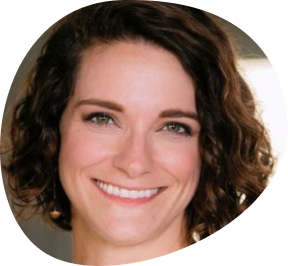.jpg)
Advances in technology have played an important role in enhancing independent living––that is, the ability to live in one’s home and accomplish daily living tasks on one’s own using technology––for people who are blind or low vision (BLV). One such technological innovation is the ability to access remote assistance of a sighted person via a live video call (e.g., AIRA or BeMyEyes apps). We partnered with The Dayle McIntosh Center to provide access to AIRA to 450 Blind/low vision community members throughout the pandemic.
Previous research suggests that AIRA may have a lasting positive impact on a visually impaired person’s quality of life, but does not examine how this improvement arises in day-to-day contexts. Previous inquiries were also conducted before the pandemic. We know little about whether and how these technologies are actually providing relief from unforeseen pandemic-related challenges. Through a survey with 57 of our participants, we found that AIRA was used to avoid touching surfaces, maintain physical distance, and navigate through public spaces that had become unfamiliar due to pandemic-related reconfigurations. In other words, it served as a sort of digital personal protective equipment (PPE) to keep visually impaired users and their community members safe. Our work suggests that designers of remote and virtual sighted assistants for the visually impaired should consider the gravity of problems that their product may be used to address in unusually high-stakes circumstances, such as pandemics or natural disasters. And more broadly, we should evaluate how alterations to the status quo in response to risks of public safety, such as a pandemic, can disproportionately affect those with disabilities.
Being a stay at home dad, Ryan uses Aira to assist him in cooking meals for his family as well as for day to day tasks like doing laundry and shopping for groceries. Ryan had previous experiences with using Aira and found it highly beneficial, but never considered it as a viable option for him and his wife because of its cost. After participating in our program and gaining access to Aira readily, he has found himself using it multiple times a day and loves having it as a tool in his pocket. To Ryan, the Community Access Project means freedom.
Miguel is an employee of the Dept. of Treasury and the first vice president of San Joaquin’s National Federation of the Blind. It is very common for him to encounter construction zones in his route to work, and in the past it was a gamble to engage in these situations since he did not have the ability to know ahead of time what he was getting into. Now, knowing he can use the Aira service to get the visual information he needs, he is able to deliberately walk down any path and assess the situation to determine how he should proceed. To Miguel, the Community Access Project means greater engagement in activities without the concern of whether inaccessibility along the way is going to be a barrier for him.
Miguel is an employee of the Dept. of Treasury and the first vice president of San Joaquin’s National Federation of the Blind. It is very common for him to encounter construction zones in his route to work, and in the past it was a gamble to engage in these situations since he did not have the ability to know ahead of time what he was getting into. Now, knowing he can use the Aira service to get the visual information he needs, he is able to deliberately walk down any path and assess the situation to determine how he should proceed. To Miguel, the Community Access Project means greater engagement in activities without the concern of whether inaccessibility along the way is going to be a barrier for him.











Lorem ipsum dolor sit amet, consectetur adipiscing elit. Suspendisse varius enim in eros elementum tristique. Duis cursus, mi quis viverra ornare, eros dolor interdum nulla, ut commodo diam libero vitae erat. Aenean faucibus nibh et justo cursus id rutrum lorem imperdiet. Nunc ut sem vitae risus tristique posuere.